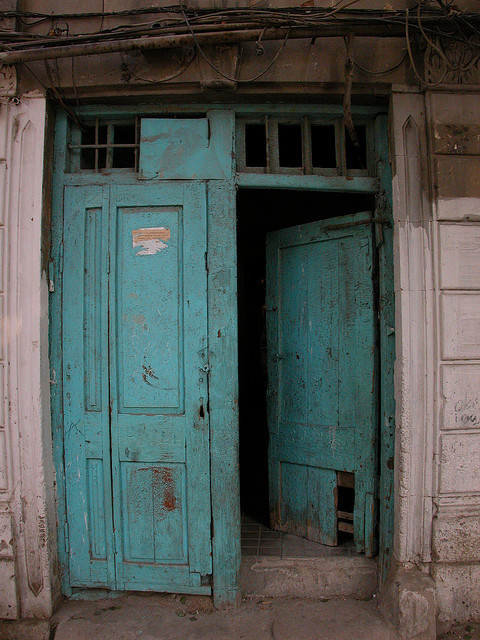by Karen Montgomery Moore, Colorado Review Associate Editor
Thoughts of genre, hybridity, and essays have somehow been central to both my work and my reading in 2014. At times, the label of “essay” seems to be applied as a fall-back, an admittance that there is not always an easy place to shelve work that ranges from personal to cultural to historical to infused with images. Yet rather than a giving up, I came to see the categorization of essay as a giving in, a surrendering to the form’s versatility.
I have been far from alone in asking questions about essays. It seems such queries have abounded: Has 2014 been the year of the essays? Are they in or out? Tired or revitalized? Such questions were inescapable this year, including such notable debates as the New York Times’s “Is This a Golden Age for Women Essayists?” Putting aside the problematic implications of such a question, I wonder if articles on “the time of the essay” are missing larger, more interesting posts about the range and diversity of this form and why it so suits content needs of writers now—persistently so.
This in mind, I have pulled together some of the more interesting discussions about essays to be sure these ideas did not escape notice, even if they are not as SEO-friendly.
Most recently, Charles D’Ambrosio’s Loitering (Tin House Press) has generated public attention. An excerpt, “Catching On,” is available via the Portland Mercury. Leslie Jamison recently interviewed D’Ambrosio for the New Yorker in “Instead of Sobbing, You Write Sentences.” In his first answer, D’Ambrosio articulates how he separates confessional writing from personal essays:
You don’t have to indulge in a goopy confessional mode to write a personal essay—you’re more mysterious than you know, more naked than you imagine, and whether you intend it or not you’re going to be exposed.
Jamison’s own The Empathy Exams (Graywolf Press, 2013) was highly acclaimed. She discusses the form of personal essays in her post on Publishers Weekly, simply titled “How to Write a Personal Essay,” in which she focuses on the question “How can the confession of personal experience create something that resonates beyond itself?” One of Jamison’s conclusions is
I often think of the subject of an essay as something like a courtyard full of questions—questions about grief, or longing, or memory, or empathy. Writing means walking a furious labyrinthine path in order to peer at them from every possible direction. Every mode of inquiry—history, memoir, criticism—is a doorway that opens onto this courtyard from a different angle.
Perhaps the most welcoming aspect of the essay is that it posits these questions to its reader and the world at large. As such, even reviews can become their own essays that continue turning these questions over, such as Suzanne Koven’s essay for the Los Angeles Review of Books, which takes up the challenge of what empathy should look like personally and professionally (Koven is a doctor) even as she reviews The Empathy Exams. In a similar vein, Goldie Goldblum uses a review of two books for Kenyon Review to process burying her mother’s body ten years after her death.
Essay Daily offers rich, thought-provoking content so often that choosing highlights over the past year is difficult. Their monthly feature on visual essayists focuses on the form’s hybrid potential and are always worth the read. Another noteworthy post (not of this feature) is Kate Schmitt’s “Static Signals: Alternative Structures in Nonfiction,” which explores the “noise” involved in lyric essays, especially in Eula Biss‘s “The Pain Scale” and Jenny Boully‘s “The Body”:
a variety of contemporary nonfiction structures seem to strategically incorporate “noise.” The lyric essay is a prime example, making use as it often does of short sections separated by white space. . . . At the beginning of a lyric essay, readers are set afloat on a sea of seemingly unconnected statements. It is only as they continue reading that the pieces begin to accrue meaning—meaning which is deepened by the white space that allows, and even requires, a certain element of participation from the reader.
For Numéro Cinq, Patrick Madden argues W. G. Sebald is an essayist, and then questions why this issue of categorization matters so much to him:
I am self-aware enough to recognize that part of my drive to see Sebald’s writing as essay is selfish, a wish to claim him as part of my tribe, so that maybe some of his glory will shine on me. But weren’t more prominent critics performing a similar feat by claiming genrelessness for Sebald?
In much the same way as Schmitt, Madden views the ability to shape the essay to both the content and author’s needs as one of its great strengths.
But perhaps one of the most favorited essays of the year was Joseph Scapellato‘s “You Are a Young Writer” for Electric Literature, and in its popularity, an enduring truth is revealed: any form that can dissect the act of writing, its struggles, its highs, its beloved and/or dreaded inevitability, will always be one in which a writer can be reborn. And there will always be an audience waiting to see what one will do next.
